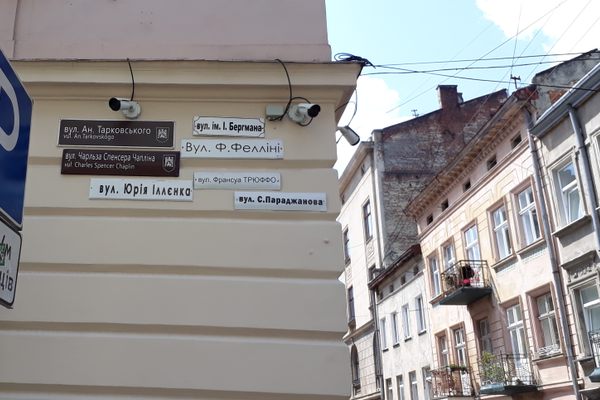AO Edited
Soufflaculs de Nontron
This pair of statues commemorates a once-widespread carnival tradition of blowing on each other’s butts with bellows.
At first glance, Nontron looks like a medieval town just like the many of its kind found in rural France: half-timbered houses, a 12th-century castle, quaint shops showcasing the local knife craft. However, if you venture through side streets in the historic district, you might be faced with an unusal sight: two wooden statues, several meters high, appearing to be engaged in strange and somewhat obscene activities. The man is holding bellows, pointing them towards the woman’s behind, as she kneels and lifts her skirt .
As a nearby panel explains, the statues represent two carnival characters: the Vieille Bouchée (“old stuck-up”), a prudish old woman who keeps farting in church, and the Soufflacul (literally “ass-blower”), a mischievous jester who is the star of a long-running show.
Since the Middle Ages, during the town festival, men have dressed up in special attire to play the role of the Soufflacul: loose white shirts and pants, donning white makeup (or, more frequently, flour), covering their heads with hats and wigs.
But being a Soufflacul isn’t just about the costume. First, they have to perform a complex choreography, forming a procession and blowing on the butts of those who stand before them while singing folk songs. The real climax, though, comes when they break the formation, burst through doors asking for alcohol, and use their bellows to blow the demons away under women’s skirts. Finally, the procession stops in front of the town hall, where the most illustrious party-goers are inducted as members of the Order of the Valiant Sardine by the mayor.
The tradition is at least five centuries old. it was first documented in print during the 16th century, and has changed very little since. Its revival, though, is quite recent. Once commonplace in southern France, it nearly went extinct during the first half of the 20th century, before being revived in the 1970s by local aficionados. Their efforts have since been supported by the town officials, and later on by the state, which recognized the Soufflaculs as intangible heritage in 2010. Today, Nontron is only one of two French towns (along with Saint-Claude, Jura) still perpetuating the tradition.
















Follow us on Twitter to get the latest on the world's hidden wonders.
Like us on Facebook to get the latest on the world's hidden wonders.
Follow us on Twitter Like us on Facebook